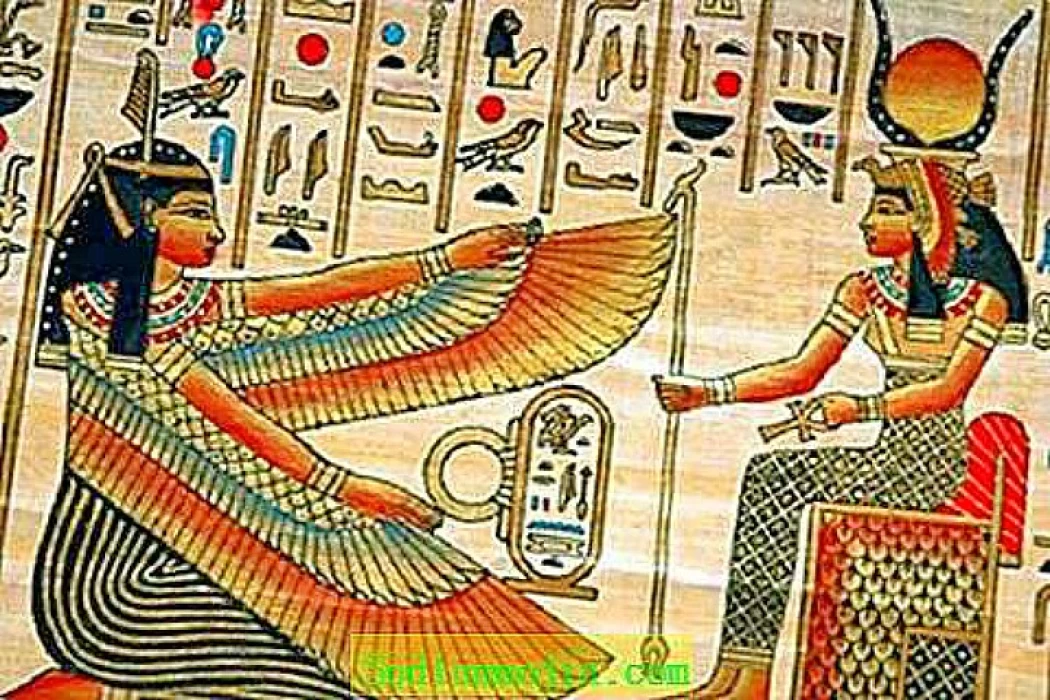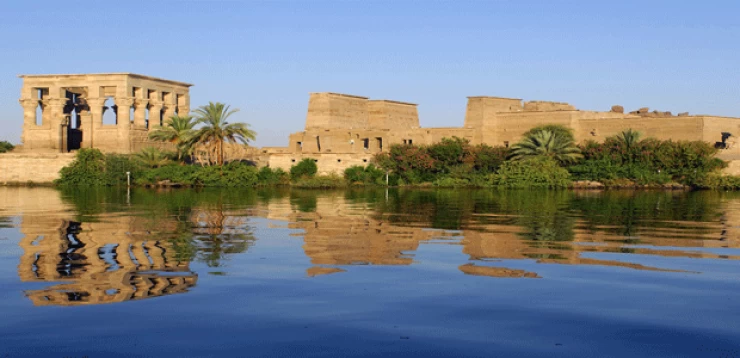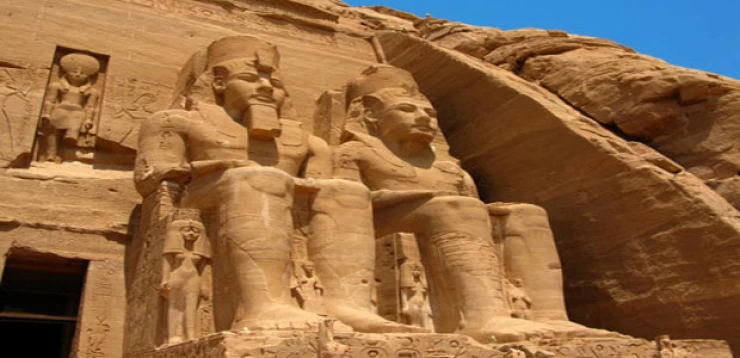
Goddess Isis | The Egyptian Goddess Isis
The Egyptian Goddess Isis
Isis is among the ancient Egyptian goddesses who was the most extensively worshiped and longest-existing of all the Egyptian gods. She derived her name from the word "est" which was translated to "seat" in order to refer to her steadfastness and to Egypt's throne. She was the mother of pharaohs because the king was equated with Horus, Isis' son.
Her symbol is the "scorpion" that guarded her while she was in concealment and the "hadda," a bird of prey, that took her form to restore her husband. Her symbols are also the "empty throne" and the musical instrument, the sistrum.
Isis was typically portrayed as a benefactress, wife, mother, and protector who kept others' welfare and interests at her own cost. She was also known as "Great Magic" for power, "Mother of the Gods," and other many titles based on what role she filled then.
Isis grew increasingly popular over time, and all the goddesses were seen as aspects of Isis; she was the only Egyptian goddess worshiped by every citizen of the country. She, her husband Osiris, and her son Horus replaced the Theban triad of Amun, Mut, and Khonsu, the most popular sacred trinity of Egypt. Osiris, Isis, and Horus are also referred to as the Abydos Trinity.
Isis cult originated in the Nile Delta, and her most prominent temple was the Shrine of Bahbet of Stone, and then she spread throughout Egypt.
The temple of Isis was served by male and female priests who carried out her rituals in her temple, which was her initial home and contained a statue of her like the temples of other goddesses. The priest and priestesses maintained the image of the temple with respect and invited the Egyptians to visit the temple to make offerings and prayers, and only the high priestess and high priest could enter the sanctuary where the statue of Isis was stored.
Isis was associated with the sea and was a protector of sailors and merchants who wore amulets in her name and to help them when they were threatened. Isis, unlike other Egyptian goddesses, transcended international borders. She was being worshiped by the Greeks and Romans, who believed in her as the supreme world creator goddess. Her cult in Rome was in competition with that of early Christianity, which borrowed the icon of Isis and the child god Horus in depicting the Virgin Mary with Christ.
Her cult was the most universal in the ancient Mediterranean until Christianity conquered the pagan religions between the fourth and sixth centuries AD, and the cult of Isis was prohibited along with the cult of other pagan deities.
The origin of Isis legend
Isis, it is said according to mythology, was born once the world existed. The most common myth talks of a time when there was chaos and darkness in the world, and suddenly, on a particular day, a wave surfaced from the seas, and standing on it was the god Atum. Atom gazed into the boundless emptiness and perceived that he was alone, and thus Atom married his shadow and fathered Shu (the god of breeze) and Tefnut (the goddess of moisture). Then he left them alone on the boundless hill (which is named Ben-Ben) and proceeded to create the world.
Atum stayed alone on the hill among the uproar, worried for the safety of his children, so he withdrew his eye that was stationary and sent it in search of them. This eye, the all-seing eye, was one of the most recognizable Egyptian symbols subsequently, known as the "Eye of Odjat" or the "Eye of Ra." Shu and Tefnut returned with the Eye, losing their task to make the world, and Atum was so happy to accept them, that he began crying. Men and women were brought forth from his tears that dropped on the fruitful ground of Tell Ben Ben.
Shu and Tefnut were married and produced Jeb (earth) and Nut (sky). Jeb and Nut grew to love each other in due time and were inseparable, frustrating Atom because they were brother and sister, so he pushed Nut up above Jeb, tying her there, so the two lovers could gaze at each other without ever touching again.
Nut had become pregnant with Jeb and then gave birth to five children, Osiris, Isis, Set, Nephthys, and Horus the Elder. The five gods were assigned the task of ruling over human activities on earth, and from them all other Egyptian gods came into existence.
Isis and the legend of Maat
The myth of Maat and balance and harmony presents the predominant virtue of Egyptian civilization. The gods, as Egypt believed, counted on them to behave according to eternal standards, the primary of which was Maat, depicted by the goddess of the same name who was adorned with a white feather of truth upon her head.
A person who lives according to Maat enjoys a peaceful existence on earth and is also rewarded in the afterlife, when his heart is discovered to be lighter than the feather of truth, and he is welcomed into the paradise known as the Field of Reeds.
Photographs of Isis and her twin sister Naftis together present this concept of balance, where Isis is light and Naftis is darkness. Naphtis was not depicted as a bad symbol to counter Isis' goodness but was associated with death while Isis was associated with life, thus presenting cosmic balance.
Isis legend goes beyond Egypt's boundaries
When Alexander the Great conquered Egypt in 331 BC, his troops equated Isis with the famous Greek goddess Demeter. This rendered her known to the Greeks, who conducted their own rituals to venerate the Egyptian goddess. Upon Alexander's death, his general Ptolemy I Soter took over, using Egypt as his power base while allocating the spoils and continuing to Hellenize Egyptian society.
The similarities between the myths of Isis and Demeter led to Isis's strong identification with Demeter. The two myths equated Demeter's lost daughter Persephone with Isis's lost husband, and the two separate stories into each other. The Eleusinian Mysteries, ancient Greece's finest religious rite, elevated Demeter to the position of supreme guardian of mysteries of life and death, and Isis subsequently adopted the same role.
Isis's myth spread to Rome and was called the Queen of Heaven and associated with the goddess Circe, Demeter's counterpart, and subsequently Venus. After the assassination of Julius Caesar in 44 BC, during the chaos of civil war, the Romans wanted to build a temple in a bid to worship Isis, believing she would protect and guide them through dark times. Augustus Caesar would not allow this and believed worshiping Isis an unsafe act to perform, which would weaken Rome.
Isis is the heroine of a legend that originated in ancient Egypt, and her influence extended to different parts of the world, from thousands of years until the present time, transcending her original religious character, to be manifested in the arts and literature in various cultures, including Arab culture.
Goddess Isis is one of the greatest Egyptian goddesses. She was the wife and the semi-sister of Osiris. They had a son named Horus. Isis was the goddess of life and magic, so she was able to shield women and children. She also helped sick people by healing them from their sicknesses. Her symbols were the ankh, her wings, and her throne headdress.
Egyptian gods and goddesses usually started in one place. They had their own cities where they were venerated throughout the ages. It was popular in ancient Egypt that the wife could be the sister of the king because they preferred that the queen come from the royal family. The city or the town of Isis's worship was not found throughout early history. Because there were no known temples for her.
Especially the legend of the faithful wife of the Lord of the underworld in ancient Egypt (Osiris), Goddess Isis, and her famous son Horus, who took revenge for his father's pathetic murder by the evil god of the desert and the foreign lands.
You can see the whole story and the myth of Isis and Osiris depicted on the walls of the ancient temples of Egypt, like the Edfu Temple and Philae Temple in Aswan.
Worshiping Isis in certain temples did not start until the end of the 30th dynasty. Before that, people were worshipping Isis in other gods' temples during the Middle Kingdom and the New Kingdom of ancient Egyptian history. In the 30th dynasty, people worshipped Isis with her husband Osiris and her son Horus.
In the Roman age, temples of Isis became more popular. One of them is known as the Temple of Philae. Years after years, Isis's temples were so famous that they deployed abroad, and her followers transferred the venerating of Isis to the Semitic goddess Astarte because of the similarity of names. In the Hellenistic era, she also became the goddess who protected sailors. Once you are in Egypt, Cairo Top Tours will take care of it through our highly qualified guides specialized in Egyptology to make your visit to the land of the Pharaohs a success.
The mother occupied a great position that was embodied in all aspects of life, from family and society to religion, art and literature.
The goddess Isis represents the most famous image of motherhood in ancient Egypt, embodying the example of a protective and sacrificial mother... Isis appears in most inscriptions carrying or breastfeeding her child Horus, reflecting the mother's role in protecting and caring for her children.
Goddess Isis is one of the most revered and powerful deities in ancient Egyptian mythology. Known as the goddess of life, magic, and healing, Isis played a crucial role in protecting women, children, and the sick. She was both the wife and the semi-sister of Osiris, the god of the underworld, and together they had a son, Horus. Isis' divine attributes were represented through her symbols: the ankh (a sign of life), her majestic wings, and the throne headdress that signified her royal status.
Isis was believed to guide the dead to the afterlife and helped Osiris, and was considered the divine mother of the pharaoh as he was likened to her son Horus. Her maternal assistance was represented by a healing spell to help the common people.
Egyptian gods and goddesses often had specific cities where they were venerated. However, in the early stages of Egyptian history, there were no dedicated temples for Isis. Instead, she was worshipped within the sanctuaries of other gods. It wasn’t until the 30th Dynasty that her cult gained widespread recognition, and dedicated temples were built in her honor.
Her worship continued on Philae Island in Aswan until the 6th century AD, long after the Egyptian and Roman eras had ended, a testament to her importance and presence.
Over the centuries, Philae gained a special status in worship, to the point that crowds of followers of the cult would gather to relive the story of the death and resurrection of Osiris.
During the Middle and New Kingdoms, worshippers honored Isis alongside Osiris and Horus, forming a sacred trinity. As her influence grew, her worship extended beyond Egypt, spreading to regions such as Rome, Greece, and even parts of Asia. The cult of Isis became so widespread that her veneration was later associated with the Semitic goddess Astarte, due to the similarities in their names.
One of the most compelling myths in Egyptian history is the story of Isis and Osiris. Osiris, the ruler of Egypt, was treacherously murdered by his jealous brother, Set, who dismembered his body and scattered the pieces across the land. In her devotion, Isis tirelessly searched for Osiris’ remains, reassembling them with her divine magic and resurrecting him long enough to conceive their son, Horus.
Horus later avenged his father’s murder by defeating Set, restoring justice and order. This legend, deeply rooted in themes of loyalty, resurrection, and the eternal struggle between good and evil, can be found inscribed on the walls of temples such as Edfu and Philae in Aswan.
















